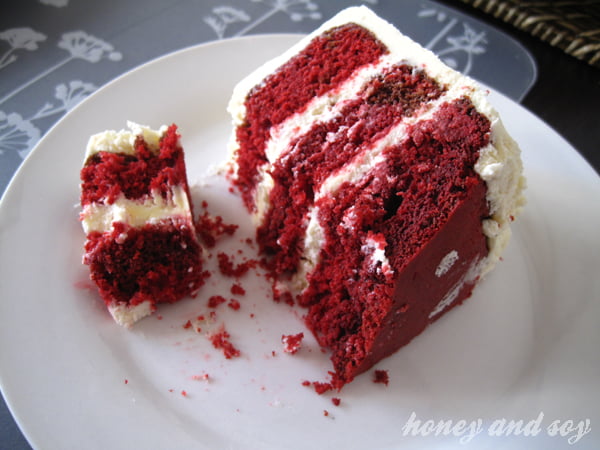Indulging in a moist, velvety, and visually striking red velvet cake is an experience that has captivated dessert enthusiasts for decades. This iconic cake, known for its vibrant red colour and luxurious taste, holds a fascinating history that dates back to the 19th century. Join us on a delightful journey as we uncover the origins, legends, and evolution of the beloved red velvet cake.
Origins and Early Days
The precise origins of the red velvet cake are shrouded in mystery, with several theories and legends surrounding its creation. One popular belief is that it originated in the United States during the Victorian era, where the rich cocoa powder and red hue symbolized luxury and indulgence.
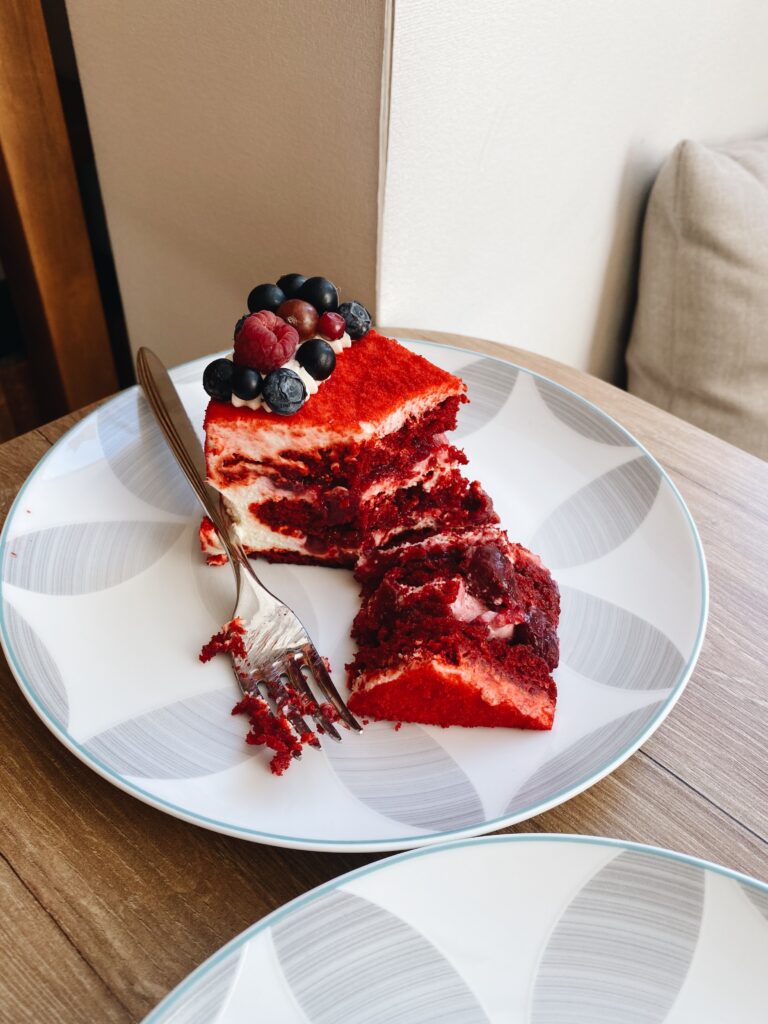
Early recipes for red velvet cake often called for natural ingredients such as buttermilk, vinegar, and cocoa, which reacted with the acidic components to create a chemical reaction resulting in the signature reddish hue. The Waldorf-Astoria Hotel in New York City claims to have been one of the first establishments to serve red velvet cake, elevating its popularity.
Pop Culture and Iconic Moments
Red velvet cake gained widespread recognition and popularity in the 1940s when the Adams Extract Company introduced a recipe for “Adams Original Red Velvet Cake” on its food colouring packaging. This clever marketing move, combined with its delectable taste and eye-catching colour, propelled the cake into the spotlight.
In the decades that followed, red velvet cake became synonymous with celebrations, weddings, and holidays, gracing the tables of households across the United States. Its appeal was further solidified when it made appearances in films and television shows, including the iconic “Steel Magnolias” and the renowned series “Sex and the City.“
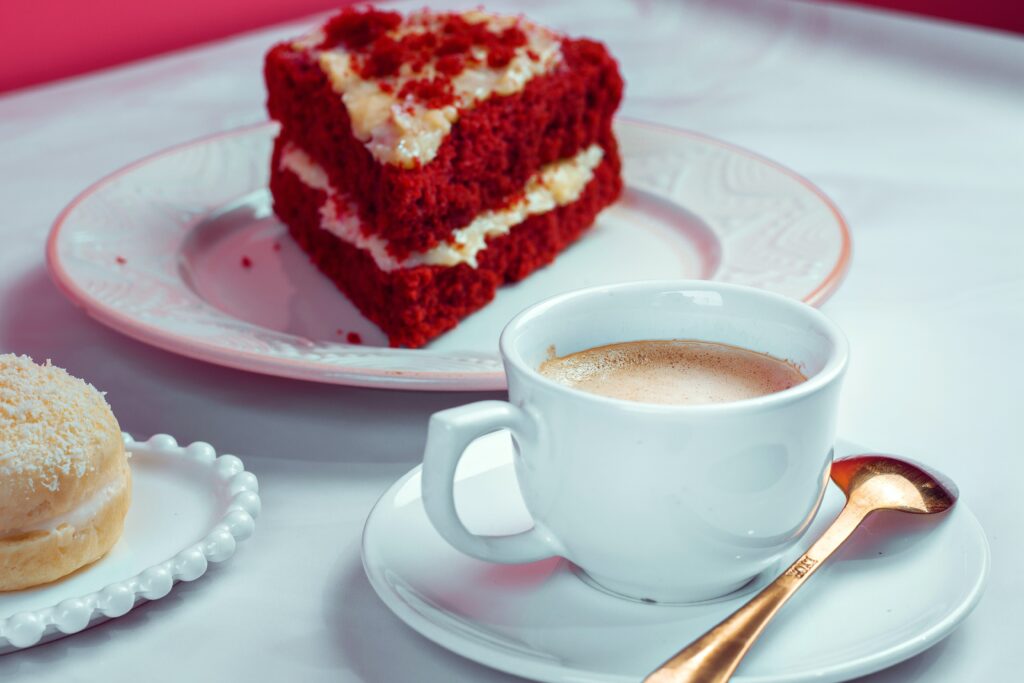
Evolution and Modern Interpretations
As the years progressed, variations of the classic red velvet cake emerged, showcasing creative twists and adaptations including versions with Honey. Cream cheese frosting, a beloved accompaniment, became the standard topping for the cake, providing a luscious balance to the slightly tangy and sweet flavours.
Furthermore, bakers and home cooks began experimenting with different presentations, incorporating red velvet into cupcakes, cookies, and even ice cream. The versatility and distinct flavour profile of red velvet cake ensured its enduring presence in the culinary landscape.
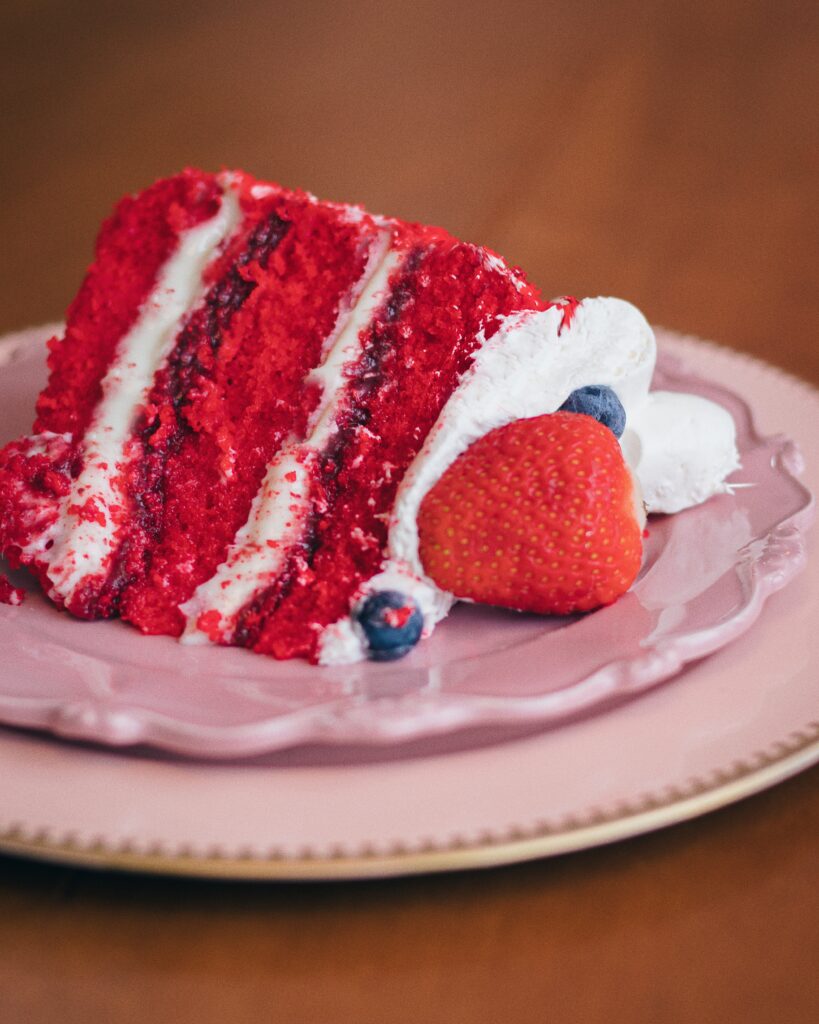
From its mysterious origins to its widespread popularity, red velvet cake has embedded itself as a cherished dessert, transcending generations and cultural boundaries. With its rich history and undeniable allure, this iconic cake has secured its place in the annals of culinary delights.
Whether you savour a slice at a wedding reception, delight in a homemade creation, or indulge in a red velvet cupcake at your favourite bakery, remember that you’re enjoying a delectable treat with a storied past. The red velvet cake is not merely a dessert; it’s a symbol of decadence, elegance, and the everlasting pleasure of a well-crafted indulgence.
Red Velvet Cake Recipe
adapted from pinch my salt by Honey and Soy
2 ½ cups sifted flour
1 teaspoon baking powder
1 teaspoon salt
2 Tablespoons dutch process cocoa powder (unsweetened)
2 oz. red food colouring (please play around with this- I used 10ml of liquid food colouring)
115g unsalted butter, at room temperature
1 ½ cups sugar
2 eggs, at room temperature
1 teaspoon vanilla extract
1 cup buttermilk, at room temperature (I always use a substitute: 1 tsp white vinegar to 1 cup milk, let stand for 5 min)
1 teaspoon white vinegar
1 teaspoon baking soda
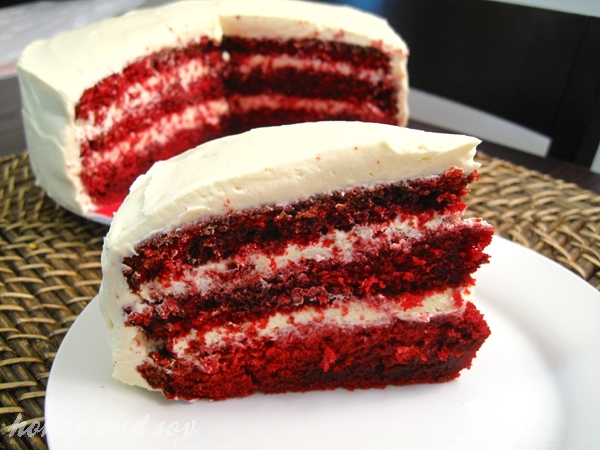
1. Preheat oven to 180°C. Butter and flour two 9-inch round cake pans or three 8-inch round cake pans.
2. Sift together the flour, baking powder, and salt into a medium bowl; set aside. In a small bowl, mix food colouring and cocoa powder to form a paste without lumps; set aside.
3. In a large bowl, using a hand mixer or stand mixer, beat butter and sugar together until light and fluffy, about three minutes. Beat in eggs, one at a time then beat in vanilla and the red cocoa paste, scraping down the bowl with a spatula. Add one-third of the flour mixture to the butter mixture, beat well, then beat in half of the buttermilk. Beat in another third of the flour mixture, then the second half of the buttermilk. End with the last third of the flour mixture, beat until well combined, making sure to scrape down the bowl with a spatula.
4. Make sure you have cake pans buttered, floured, and nearby. In a small bowl, mix vinegar and baking soda. Yes, it will fizz! Add it to the cake batter and stir well to combine. Working quickly, divide the batter evenly between the cake pans and place them in a preheated oven. Bake for 25-30 minutes. Check early, the cake is made when a toothpick inserted in the centre comes out clean.
5. Cool the cakes in their pans on a wire rack for 10 minutes. To remove the cakes from the pan, place a wire rack on top of the cake pan and invert, then gently lift the pan. Allow cakes to cool completely before frosting. Frost with buttercream or cream cheese icing (recipe below).
Recipe Notes: * Wear an apron and be careful with the red food colouring to avoid staining something! As you’re mixing the cake batter, use a spatula to scrape down the bowl frequently throughout the entire process.
Cream Cheese Frosting
500g cream cheese (2 packages), softened
115g unsalted butter, softened
1 teaspoon vanilla extract
2 ½ cups powdered sugar, sifted
pinch of salt
With an electric mixer, blend together the cream cheese and butter until smooth. Turn the mixer to low speed and blend in powdered sugar, salt and vanilla extract. Turn the mixer on high and beat until light and fluffy. Use immediately or refrigerate, covered, until ready to use. If cooled, the frosting will need to be brought to room temperature before use (after the frosting softens up, beat with a mixer until smooth).
Recipe Notes: If you prefer a sweeter and/or stiffer frosting, more powdered sugar can be added (up to four cups). But remember, the more sugar you add, the less you’ll be able to taste the tangy cream cheese!

